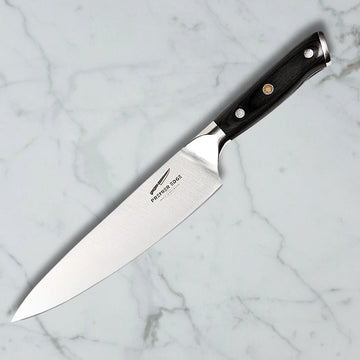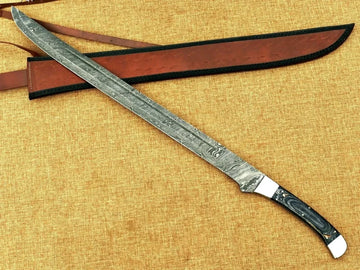e world of knife-making is steeped in history, tradition, and a deep appreciation for craftsmanship. Central to this craft are two critical components: the blade and the billet. Both play a pivotal role in determining the quality, performance, and aesthetic appeal of the finished knife. This article delves into the intricacies of blades and billets, exploring their importance in the knife-making process and how they contribute to the creation of high-quality knives.

- The Role of the Blade in Knife-Making
The blade is the most critical part of any knife, responsible for its cutting ability and overall functionality. The design, material, and manufacturing process of the blade directly influence the knife’s performance, durability, and suitability for various tasks.
Blade Materials
The choice of material for a blade is one of the most significant decisions a knife-maker can make. The material affects the blade’s sharpness, edge retention, toughness, and corrosion resistance. Common materials used for blades include:
High-Carbon Steel: Known for its excellent edge retention and sharpness, high-carbon steel is a favorite among knife-makers. However, it requires more maintenance to prevent rust and corrosion.
Stainless Steel: Stainless steel blades are popular due to their resistance to rust and corrosion. They are easy to maintain but may not hold an edge as well as high-carbon steel. Popular stainless steel grades include VG-10, 440C, and S30V.
Tool Steel: Tool steels, such as D2 and O1, offer a balance between toughness and edge retention. They are highly durable and are often used in heavy-duty knives.
Damascus Steel: Damascus steel is prized for its unique patterns and combination of different steel layers. It offers a blend of hardness and flexibility, making it both functional and visually appealing.
Blade Design
The design of the blade also plays a crucial role in its performance. The shape, thickness, and grind of the blade determine how well it cuts, slices, and pierces. Common blade designs include:
Drop Point: A versatile design with a convex curve on the spine of the blade, making it ideal for general-purpose use.
Clip Point: Characterized by a concave curve on the spine near the tip, the clip point blade is excellent for piercing and detail work.
Tanto: With a sharp angular tip, the tanto blade is designed for strength and piercing ability, often used in tactical knives.
Sheepsfoot: Featuring a straight edge and a rounded spine, the sheepsfoot blade is ideal for precision cutting without the risk of accidental piercing.
- Billets: The Foundation of the Blade
A billet is a piece of metal that serves as the raw material from which a blade is forged or machined. The quality of the billet directly affects the blade’s characteristics, making it a crucial element in the knife-making process.
Types of Billets
Billets come in various forms, depending on the material and the intended knife design:
Monosteel Billets: These billets are made from a single type of steel. They are straightforward to work with and are commonly used for high-carbon and stainless steel knives.
Pattern-Welded Billets: Often referred to as Damascus billets, these are created by layering different types of steel and forge-welding them together. The result is a billet with unique patterns and a combination of properties from the different steels used.
San Mai Billets: San Mai is a traditional Japanese technique that involves sandwiching a hard, high-carbon steel core between layers of softer, more ductile steel. This method combines the sharpness and edge retention of the hard core with the toughness and corrosion resistance of the outer layers.
Forging vs. Stock Removal
There are two primary methods for shaping a billet into a blade: forging and stock removal.
Forging: In forging, the billet is heated to a high temperature and hammered into shape. This process refines the grain structure of the steel, enhancing the blade’s strength and toughness. Forging is often used in traditional knife-making and is associated with high-end custom knives.
Stock Removal: In this method, the billet is shaped by grinding away excess material. Stock removal is more precise and allows for finer control over the blade’s shape and thickness. It is commonly used in mass production and for knives with intricate designs.
- Heat Treatment: Unlocking the Billet’s Potential
Heat treatment is a critical step in transforming a billet into a functional blade. The process involves heating the blade to a specific temperature and then cooling it rapidly (quenching) to achieve the desired hardness. This is followed by tempering, where the blade is reheated to a lower temperature to reduce brittleness and increase toughness.
Proper heat treatment is essential for optimizing the blade’s performance. It affects the blade’s hardness, flexibility, and ability to hold an edge. Knife-makers often consider heat treatment to be an art, as the exact process can vary depending on the steel used and the intended use of the knife.

- Finishing the Blade
Once the blade has been shaped and heat-treated, it undergoes finishing processes to refine its appearance and performance. These processes include:
Grinding and Sharpening: The blade is ground to its final shape and thickness, and the edge is sharpened. The grind type (flat, hollow, convex) affects the blade’s cutting ability and durability.
Polishing: Polishing removes surface imperfections and enhances the blade’s aesthetic appeal. High-polish finishes are common in decorative and high-end knives, while satin finishes offer a balance between looks and practicality.
Etching and Patterning: For Damascus and other patterned blades, etching is used to highlight the unique patterns in the steel. This process adds a layer of artistry to the blade, making each knife unique.
Conclusion
The journey from billet to blade is a testament to the skill and artistry of knife-makers. The choice of materials, the forging or machining process, and the finishing touches all contribute to the final product’s quality and performance. Whether you’re a knife enthusiast, a collector, or someone who appreciates fine craftsmanship, understanding the importance of blades and billets can deepen your appreciation for the knives you use and admire.




